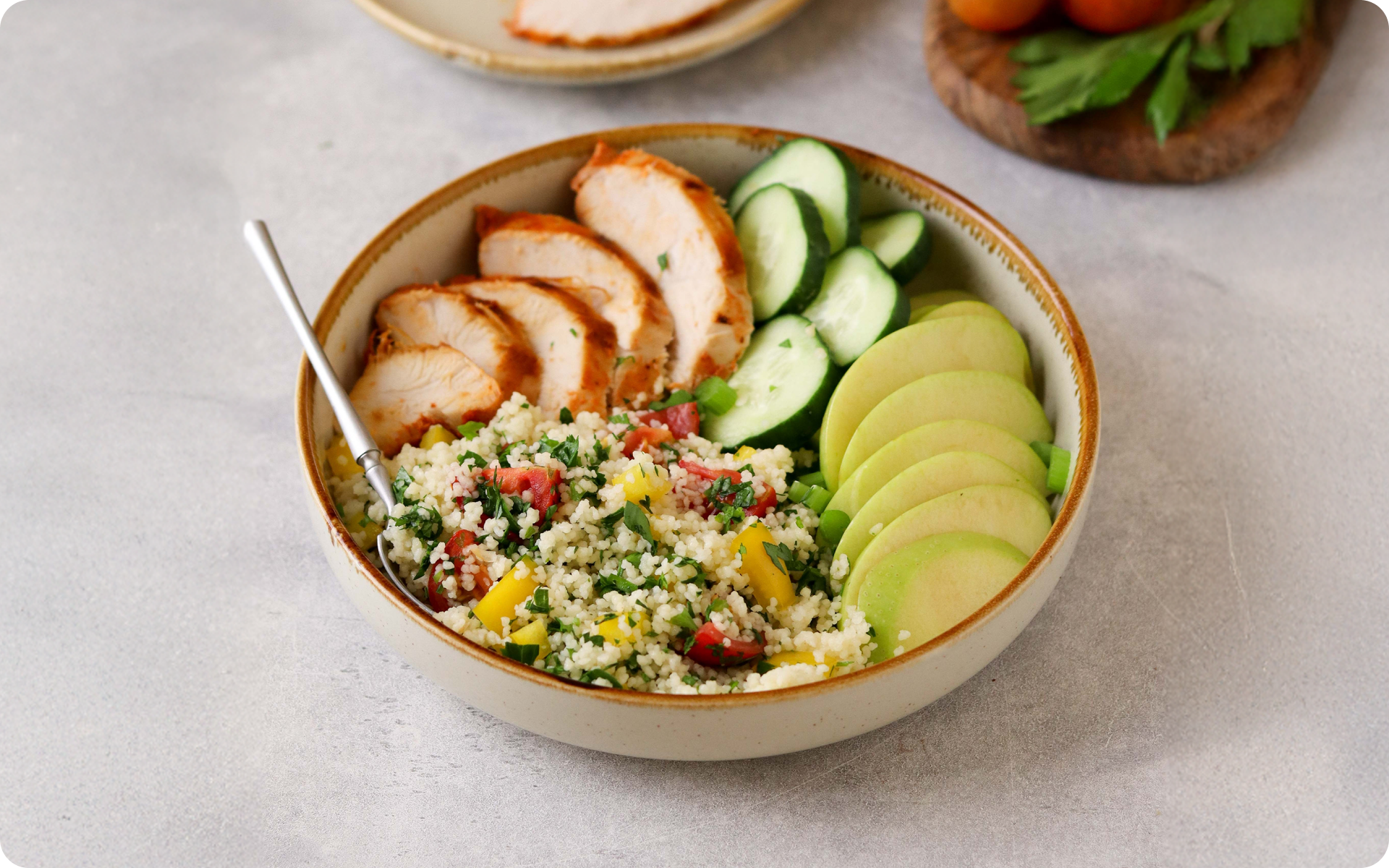Oysters are a type of shellfish that can be found in saltwater. Because they are mollusks, they are round or oval in shape and have a hard outer shell. They are filter feeders and can be found in both the Atlantic and Pacific oceans. There are many different types of oysters, but the most popular are the Eastern oyster and the Pacific oyster. Oysters have been eaten for centuries, and they are considered a delicacy in many parts of the world. They are often served raw or slightly cooked. The shell can also be ground up and used to make a powder that is added to food in order to add flavor. Oysters have a mild, sweet flavor and a firm texture. They are a nutrient-rich food that offers many health benefits. But there are also some potential side effects to consider before eating oysters. This article will explore all you need to know about oysters, including their benefits, side effects, and how to eat them safely.
Get your personalized
meal plan!
Oysters Nutrition Facts
According to the USDA, 100 grams of wild eastern oysters contains the following nutrients (8):
- Calories: 51
- Protein: 5.71 grams
- Fat: 1.71 grams
- Carbohydrates: 2.72 grams
- Niacin (vitamin B3): 7% of the RDI
- Vitamin B12: 364% of the RDI
- Iron: 26% of the RDI
- Magnesium: 4% of the RDI
- Phosphorus: 8% of the RDI
- Zinc: 354% of the RDI
- Copper: 317% of the RDI
- Manganese: 13% of the RDI
- Selenium: 36% of the RDI
Oysters are packed with essential nutrients, such as protein, vitamins, minerals, and omega-3 fatty acids. They’re particularly high in vitamin B12, zinc, and copper.
Read More: Seafood Diet To Turbocharge Your Weight Loss Without Skipping On Flavor
Health Benefits Of Eating Oysters
Due to their nutrient-rich profile, oysters offer the following potential health benefits:
Improved Brain Health
Oysters contain several vitamins and minerals that are important for brain health. These include antioxidants, fatty acids and vitamin B12. All of these nutrients are essential for cognitive function and may help prevent or delay age-related brain decline (3).
May Help Prevent Cancer
Oysters are a good source of selenium, which is a mineral that may help prevent cancer. Selenium is a powerful antioxidant that helps protect cells from damage caused by free radicals. It also helps regulate the expression of genes that are involved in cancer development (12).
May Help Regulate Blood Sugar Levels
Oysters are a good source of magnesium, which is a mineral that has been shown to help regulate blood sugar levels. Magnesium plays a role in the absorption of glucose from the gut and its use by the body’s cells. Getting enough magnesium along with a fiber-rich and balanced diet can help keep blood sugar levels stable and might prevent spikes and crashes (4).
May Reduce The Risk Of Heart Disease
Oysters, like other seafoods, are a good source of omega-3 fatty acids, which are beneficial for heart health. Omega-3 fatty acids help reduce inflammation in the body, lower cholesterol levels ,and prevent blood clots that can cause heart attacks (9).
May Help Prevent Anemia
Oysters are a good source of iron, copper, and vitamin B12, which are all nutrients that play an important role in blood formation. Iron is essential for making red blood cells and transporting oxygen throughout the body (11). Copper helps with iron absorption and also contributes to connective tissue, and neurotransmitter synthesis (2). Vitamin B12 is needed to prevent anemia, which can cause fatigue and other issues (14).
May Help Manage Symptoms Of Rheumatoid Arthritis
Oysters are a good source of zinc and copper which are all nutrients that may help manage the symptoms of rheumatoid arthritis when intake is adequate (1). Zinc is an antioxidant that helps neutralize free radicals that destroy healthy tissue, possibly slowing the degeneration of joints and easing the pain of swelling. Vitamin B6 is needed to break down homocysteine, which can damage cells and increase inflammation in the body.
May Help Enhance Skin Health
Oysters are a good source of zinc, which is a mineral that is essential for skin health. Zinc helps promote collagen production, keeping skin healthy and looking young. It also helps protect against sun damage and reduces the appearance of wrinkles (15).
Can Aid Weight Loss And Management
Oysters are low in calories and rich in protein and omega-3 fatty acids, making them a good food for weight loss and management. Omega-3 fatty acids in oysters can help burn fat and protein helps keep you feeling full after eating (5) (10).
May Improve Bone Health And Prevent Osteoporosis
Oysters are a good source of magnesium and phosphorus, which are minerals that are essential for bone health (6). Magnesium helps keep bones strong and healthy by regulating calcium levels. Phosphorus helps build and maintain bones and teeth. All of these minerals work together to help prevent osteoporosis.
If you’ve mustered up the courage to crush your weight loss goal, let Betterme take the sting out of this demanding process. Our app will help you restructure your habits, remold your life and crank up your fitness results!
Side Effects Of Eating Oysters
While oysters offer many health benefits, there are a few potential side effects to be aware of:
May Increase Risk Of Food Poisoning
Oysters are often eaten raw and can sometimes contain harmful bacteria, such as Vibrio vulnificus, that can cause food poisoning (13). People with weakened immune systems are particularly at risk for developing serious health complications from food poisoning.
May Cause Allergic Reactions
Some people may experience allergic reactions to this seafood, such as a rash, hives, nausea, or vomiting (7). If you experience any symptoms of an allergic reaction after eating oysters, seek medical help immediately.
How To Eat Oysters Safely
Raw oysters come with certain risks and side effects that you should be aware of before consuming them. If you plan on eating oysters, remember to:
Only Consume Fresh Oysters
There is an increased risk of food poisoning when consuming raw oysters. To reduce the risk of food poisoning, only eat fresh oysters that you know are safe to eat raw. Ask your local fishmonger or seafood retailer if they would recommend a specific type of oyster or what is the freshest that day. Only buy oysters on the day you plan to eat them.
Avoid Oysters From Contaminated Waters
Oysters can sometimes contain harmful bacteria, such as Vibrio vulnificus, that can cause food poisoning (13). Avoid oysters from polluted or contaminated waters, as there is a higher risk of these oysters containing harmful bacteria.
Cook Oysters Thoroughly
Instead of eating oysters raw, you can cook them by steaming, boiling, or grilling. However, cooking oysters may reduce some of their nutritional value.
Read More: Is Shrimp Good For Weight Loss: Losing Pounds Without Giving Up The Good Stuff
Oyster Meal Ideas
There are many delicious and easy ways to add oysters to your diet. They include:
Add cooked oyster meat to pasta dishes
- Top baked potatoes with shredded oyster meat and cheese
- Top a salad with fresh oysters and your favorite dressing
- Add sauteed oysters to fried rice
- Steam them and top with butter and lemon juice
- Broil them while coated with bread crumbs
- Grill them and serve on a sandwich bun
- Grill them with onions, garlic, bell peppers, and tomatoes
- Bake oysters stuffed with parmesan cheese, bread crumbs, butter, lemon juice, salt and pepper
- Add them to seafood soups and stews
- Coat them in a marinade of your choice and roast them on the grill
Reasons why BetterMe is a safe bet: a wide range of calorie-blasting workouts, finger-licking recipes, 24/7 support, challenges that’ll keep you on your best game, and that just scratches the surface! Start using our app and watch the magic happen.
The Bottom Line
Oysters offer a range of health benefits, from promoting healthy brain function to improving bone health. However, there are a few potential side effects to be aware of, such as an increased risk of food poisoning and allergic reactions. To reduce the risk of these side effects, only eat oysters that are fresh and from a reputable source or cook them thoroughly.
DISCLAIMER:
This article is intended for general informational purposes only and does not serve to address individual circumstances. It is not a substitute for professional advice or help and should not be relied on for making any kind of decision-making. Any action taken as a direct or indirect result of the information in this article is entirely at your own risk and is your sole responsibility.
BetterMe, its content staff, and its medical advisors accept no responsibility for inaccuracies, errors, misstatements, inconsistencies, or omissions and specifically disclaim any liability, loss or risk, personal, professional or otherwise, which may be incurred as a consequence, directly or indirectly, of the use and/or application of any content.
You should always seek the advice of your physician or other qualified health provider with any questions you may have regarding a medical condition or your specific situation. Never disregard professional medical advice or delay seeking it because of BetterMe content. If you suspect or think you may have a medical emergency, call your doctor.
SOURCES:
- Copper and zinc intake and serum levels in patients with juvenile rheumatoid arthritis (2003, nature.com)
- Copper – Fact Sheet for Health Professionals (2021, ods.od.nih.gov)
- Dietary Factors and Cognitive Decline (2016, ncbi.nlm.nih.gov)
- Hypertension, Diabetes Mellitus, and Insulin Resistance: The Role of Intracellular Magnesium (1997, academic.oup.com)
- Long-Chain Omega-3 Polyunsaturated Fatty Acids May Be Beneficial for Reducing Obesity—A Review (2010, mdpi.com)
- Minerals and vitamins in bone health: the potential value of dietary enhancement (2009, cambridge.org)
- Molluscan shellfish allergy (2008, pubmed.ncbi.nlm.nih.gov)
- Mollusks, oyster, eastern, wild, raw (2019, fdc.nal.usda.gov)
- Omega-3 Fatty Acids EPA and DHA: Health Benefits Throughout Life (2012, academic.oup.com)
- Protein, weight management, and satiety (2008, academic.oup.com)
- Review on iron and its importance for human health (2015, ncbi.nlm.nih.gov)
- Selenium: its role as antioxidant in human health (2008, linkspringer.com)
- Vibrio bacteria in raw oysters: managing risks to human health (2016, ncbi.nlm.nih.gov)
- Vitamin B12 in Health and Disease (2010, mdpi.com)
- Zinc and Skin Health: Overview of Physiology and Pharmacology (2006, onlinelibrary.wiley.com)












